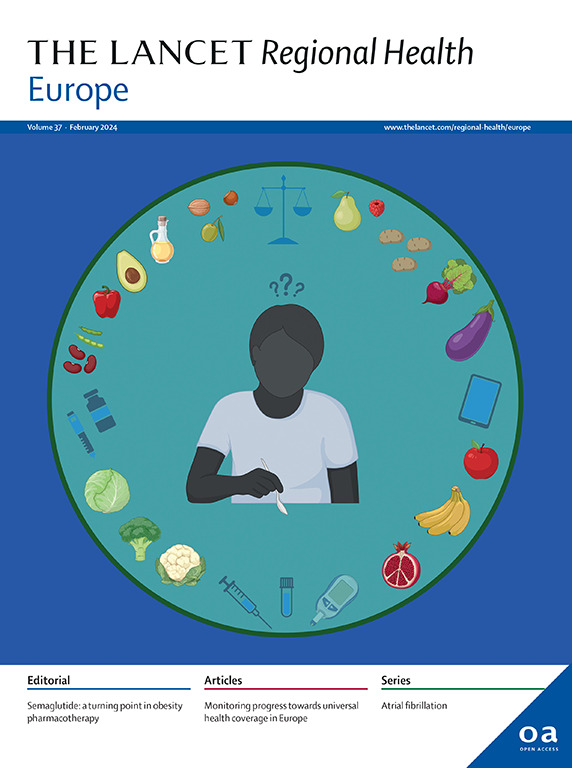Primary endpoint acceptance and its association with benefit ratings and market access in German health technology assessments: a retrospective cohort study
IF 13
Q1 HEALTH CARE SCIENCES & SERVICES
引用次数: 0
Abstract
Background
In Germany, the Health Technology Assessment process, governed by the Federal Joint Committee (G-BA), evaluates relative efficacy and safety of newly European Medicines Agency (EMA)-approved drugs against the standard of care using patient-relevant endpoints. This study aimed to investigate the impact of the acceptance of the primary endpoint on the likelihood of an additional benefit and patient access in assessments that fulfilled criteria for study design and comparator for both authorities.
Methods
We examined whether the acceptance of the primary endpoint by G-BA resulted in a higher likelihood of a positive benefit rating and a reduced risk of market withdrawal by pharmaceutical companies of drugs that underwent a benefit assessment between 2011 and 2023, in which an RCT with an adequate comparator according to G-BA served as evidence base. These objectives were tested using a stratified Mantel–Haenszel test (stratified for oncological and non-oncological benefit assessments).
Findings
In 433 benefit assessments, G-BA accepted the primary endpoints used by the EMA in only 238 cases (54.97%). Acceptance was linked to a higher probability of a positive rating, compared to assessments without (OR 2.64, 0.95 confidence interval [1.74; 4.00]). Furthermore, assessments with accepted primary endpoints were less often associated with market withdrawal (OR 0.70 [0.40; 1.24]). Of note, 152 benefit assessments (35.10%) resulted in a non-positive rating despite using a study cohort with evidence that should cover both evaluation scopes, indicating a potential discrepancy between EMA and G-BA in the assessments of new drugs.
Interpretation
The study highlights a significant harmonisation gap between EMA and G-BA in the evaluation of innovative drugs, affecting benefit ratings and potentially market access. The acceptance of primary endpoints by G-BA is crucial for positive ratings. However, the differing evaluation of high-quality evidence can also be attributed to other critical factors, such as equivalent consideration of other study endpoints and slicing of the study population.
Funding
None. GM, MG, and AH are employed by Takeda. The authors are solely responsible for the content.
德国卫生技术评估中的主要终点接受度及其与获益评级和市场准入的关联:一项回顾性队列研究
背景:在德国,由联邦联合委员会(G-BA)管理的卫生技术评估过程使用患者相关终点,根据护理标准评估欧洲药品管理局(EMA)批准的新药物的相对疗效和安全性。本研究旨在调查主要终点的接受程度对额外获益的可能性的影响,以及在评估中满足研究设计和比较标准的患者可及性。方法我们研究了在2011年至2023年期间接受G-BA的主要终点是否会导致制药公司对药物进行正面获益评价的可能性更高,并降低市场退出风险,其中根据G-BA的适当比较物的RCT作为证据基础。使用分层Mantel-Haenszel试验(对肿瘤和非肿瘤益处进行分层评估)对这些目标进行了测试。在433项获益评估中,G-BA仅在238例(54.97%)病例中接受了EMA使用的主要终点。与没有评价的评估相比,接受度与较高的积极评价概率相关(OR 2.64, 0.95可信区间[1.74;4.00])。此外,采用可接受的主要终点的评估与市场退出的相关性较低(OR 0.70 [0.40;1.24])。值得注意的是,152项获益评估(35.10%)结果为非正面评价,尽管使用的研究队列具有涵盖两个评价范围的证据,这表明EMA和G-BA在新药评估中存在潜在差异。该研究强调了EMA和G-BA在创新药物评估方面的重大协调差距,影响了获益评级和潜在的市场准入。G-BA对主要终点的接受是获得正面评价的关键。然而,对高质量证据的不同评价也可归因于其他关键因素,例如对其他研究终点的等效考虑和对研究人群的切片。GM、MG、AH受雇于武田。作者对内容全权负责。
本文章由计算机程序翻译,如有差异,请以英文原文为准。
求助全文
约1分钟内获得全文
求助全文
来源期刊

Lancet Regional Health-Europe
Multiple-
CiteScore
19.90
自引率
1.40%
发文量
260
审稿时长
9 weeks
期刊介绍:
The Lancet Regional Health – Europe, a gold open access journal, is part of The Lancet's global effort to promote healthcare quality and accessibility worldwide. It focuses on advancing clinical practice and health policy in the European region to enhance health outcomes. The journal publishes high-quality original research advocating changes in clinical practice and health policy. It also includes reviews, commentaries, and opinion pieces on regional health topics, such as infection and disease prevention, healthy aging, and reducing health disparities.
 求助内容:
求助内容: 应助结果提醒方式:
应助结果提醒方式:


